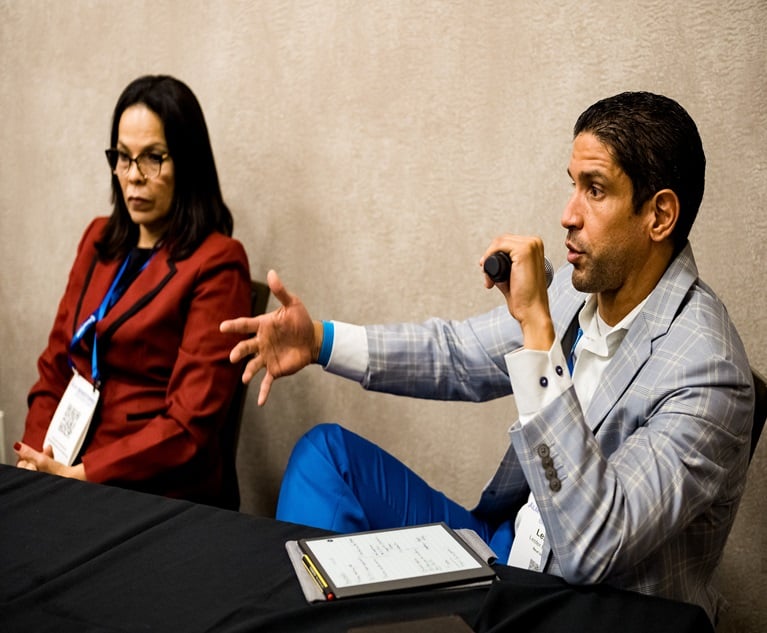Not too long ago, I was asking my advisor about insurancecoverage options during a phone call. He sent me the options viae-mail and I replied a few days later. He never got back to me.More than being frustrated or upset, I felt let down because I wasexpecting him to answer my questions and worries about his products(not immediately, mind you, but at some point). Let’s just say Ididn’t make a purchasing decision with him.
|On the flipside, had he gotten back to me very quickly (andpossibly repeatedly), would I have perceived him as pushy? Wouldthe communication have been too much?
|Related: 7 ways to move forward when a prospect doesn't callback
|We live in a technologicasl world, where every second counts.So, why subject your prospects or clients to frustrations, or makethem jump through hoops, when you can make their lives so mucheasier? (And your life, too, really.) They will not only becomeloyal clients; they will become brand ambassadors who recommend youto family and friends. And isn’t that what we’re all strivingfor — good referrals?
|A brief report from Elite Freedom Formula on EliteLeadsEliteAdvisors.comhas gathered 33 of the most common selling mistakes that insuranceagents and advisors make when talking to prospects or clients.Here, we have gathered about 10 of those and what to doinstead.
||
Mistake No. 1: Not sending an e-mailreminder
We all live very busy lives, and sometimes appointments drop offthe calendar. Send your clients a short reminder with the date,time and any other pertinent details, such as the dial-ininformation or a link to the presentation or resources that yourprospect might need.
|Having everything in one email reminder a day or two before thecall, will help your prospects organize themselves and make theprocess easier.
|What to do:
|Send that e-mail reminder a few days — or even a fewhours — before your meeting.
||
Mistake No. 2: Talking too much
To talk or not to talk, that is the question. In the example atthe beginning, I was wondering that had my insurance advisor hadgotten back to me repeatedly and in a short amount of time, would Ihave had perceived him as pushy. While I will never know now, sincehe didn’t even reply to my questions via e-mail, the question stillstands: how much is too much communication with your client?
|What to do:
|When in doubt, consult your references, your experience, and askyour clients, up-front, about how they prefer to be contacted (viaphone, e-mail, text, social media, “snail mail”), how often theywant to be contacted, and always offer a way out.
|Related: 2 easy ways to keep in touch without harassingpeople
|Need a tangible example? Think about when you go to a fancyrestaurant to enjoy a meal. Do you prefer your waiter or waitressto come by your table 5,000 times, or only once during the meal? Doyou like it when the waiter takes away your plate, even when you’renot finished, because the next course is coming out, or do you liketo take your time and linger? These are the basics of greatcustomer service and nowadays, service is all about being tailoredto each individual.
||
Mistake No. 3: Being late
A few months ago we wrote an article titled “10 bad work habits you might be doing right now(& how to stop them),” which included this bad habit:“There’s an app for that and it’s called a good ol’ watch.” Theimportance of timeliness is relevant here, too.
|While there are unusual situations that acceptably triggertardiness — getting in a car accident, say, or Fidoleaping out of your fenced yard — being consistently latesignals that you have a problem.
|What to do:
|Get a watch, put a notification on your phone, jot down the dateand time in your planner, do whatever it takes to remind you of thecall and, for the love of pumpkin spiced lattes, don’t be lateanymore! There’s no excuse.
||
Mistake No. 4: Not asking enoughquestions
Think about dating: What kinds of questions do you ask yourpotential partner to get to know their idiosyncrasies? Well,getting to know what your client needs is somewhat similar, exceptin a non-romantic kind of way. I mean, it’s not like you’re goingto ask your prospect what his or her favorite color is...
|What to do:
|Have a list of set, standard questions that you ask allprospects. Leave no page unturned. If you don’t understand one oftheir answers, rephrase the question and ask them again. It isbetter to have more information than you need than to have toschedule another call to capture information you need. Beingthorough in the first place will save you time, and will also helpavoid any misunderstandings that might arise from being forced toassumptions.
||
Mistake No. 5: Not moving the prospectemotionally
Have you seen the many, many, many TV ads about diamonds forthis holiday season? Anyone would think that Valentine’s Day wouldbe the best month for diamond stores to sell, but it seems thatthey want to change that, given the 2015 holiday advertisingterrain. One thing that is common in all these ads is the emotion:Show her that you care. Show her how much you appreciate her. Showher that diamonds are, indeed, a girl’s best friend. Show her thatchocolate diamonds are beautiful, yet not edible …
|The common thread in all these ads is the emotion that they tryto convey. Insurance is no different.
|What to do:
|When people really feel your genuine enthusiasm and passion forsomething, they will get caught up in the emotion. For more tips onhow to accomplish this, read Make no mistake, emotion sells.
||
Mistake No. 6: Talking product, notproblems
I attended a presentation at the NAILBA 34 conference earlier this year, whenthe speaker asked the audience: Why isn’t the industry focusing onthe problems that it solves for clients? Why is it insteadmarketing the many product features?
|Solving a problem is memorable. For example, “There’s an app forthat” was a great reply to the many daily struggles that some of usface. Apple came up with the catchy phrase for one of its early TVads.
|What to do:
|Listen to your prospect or client. There’s no better way tolearn what is going through someone’s mind. And remember, listeningis not the same as “hearing.” You hear noise from the dishwasher,but you listen to your children when they are trying to explain whythe sky is blue.
|Here’s an article on how to improve your listeningskills, a process that is crucial to becoming a greatadvisor.
||
Mistake No. 7: Not making them dream
We are not talking about putting your client or prospect tosleep! Au contraire! We want your client to dream of a future wheretheir family is financially secure and happy.
|What to do:
|This all goes back to being a great listener. Don’t fret, youcan practice until you further develop your listening skills. Oneexample of how to help your client dream comes fromLifeHealthPro.com contributor Amy McIlwain:
|“If you believe your dream client is always right and that it’syour job to sell him what he wants without question, he will neverperceive you as a peer. You will be seen as a commodity, justanother salesperson operating on a purely transactionalbasis.
|What you want is to be perceived as a peer. Apeer challenges his dream client’s thinking when it needsto be challenged. A peer makes sure that whatever he and his clientwork on together becomes the biggest value-creating initiative theycan dream up. A peer does not avoid the difficult issuessurrounding the results a client wants.”
|You can read the rest of McIlwain's article here: What a dream client wants
||

Mistake No. 8: Not setting a time for the nextappointment
Never, under any circumstances, hang up the phone until you havethe next appointment set! And, again, send a follow-up email afterthe call with important details that were discussed during thecall, and the time, phone numbers and other information for yournext appointment.
|What to do:
|Don’t forget to confirm your next appointment.
||

Mistake No. 9: Not using a proven script
“Hello, Mr. Prospect Number One!” Ooops! This was a real mistakethat one of our contributors said during a cold call. (You canread all about it here.)
|While her recovery was as smooth as it can be after such arookie blunder, making a call by the “seat of your pants” without aproven cold-calling script is a recipe for disaster. It will makeyou seem unprepared, which equals “unprofessional” in the mind ofthe prospect, and that’s not how you want to start a long andhealthy client relationship.
|What to do:
|If you don’t already have a proven cold-calling script, findone. Either Google it or go to the book store. Or check outexamples published, such as:
|

Mistake No. 10: Getting emotionally involved in anoutcome
A great psychologist once said that one should never getemotionally involved with what their clients are disclosing ... orsomething to that extent. While this is true, because it wouldwreak havoc on your own emotions, it doesn’t mean that you can’t beemphatic with your prospects.
|What to do:
|Empathize with your prospects, but don’t carry their emotionalburdens. Recognize that everyone has difficult situations in lifeand hurdles to overcome. Consider having a resource that could helpyour prospect or client deal with emotional challenges. Refer themto other professionals when it's warranted, but be cautious aboutgetting too involved.
|Related: Straight talk about sellinginsurance
|Are you following us on Facebook?
Want to continue reading?
Become a Free PropertyCasualty360 Digital Reader
Your access to unlimited PropertyCasualty360 content isn’t changing.
Once you are an ALM digital member, you’ll receive:
- All PropertyCasualty360.com news coverage, best practices, and in-depth analysis.
- Educational webcasts, resources from industry leaders, and informative newsletters.
- Other award-winning websites including BenefitsPRO.com and ThinkAdvisor.com.
Already have an account? Sign In
© 2024 ALM Global, LLC, All Rights Reserved. Request academic re-use from www.copyright.com. All other uses, submit a request to [email protected]. For more information visit Asset & Logo Licensing.








